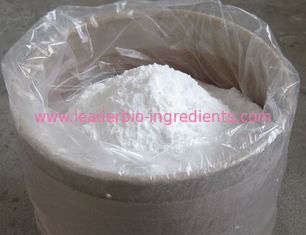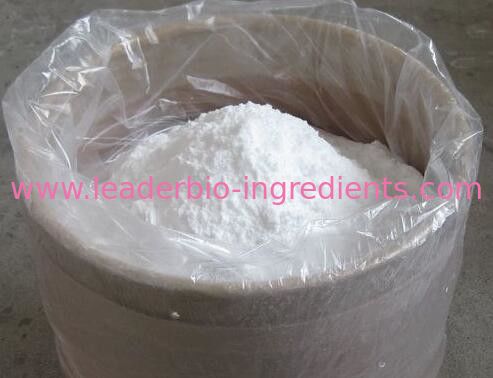
600MT/Year Factory supply Orotic Acid Anhydrous CAS 65-86-1
-
Purity99.9%
-
UseHealth Care,nutrients,pharmaceuticals
-
OriginChina
-
Package25KG/Drum
-
ManufacturerXI'AN LEADER BIOCHEMICAL ENGINEERING CO.,LTD
-
AppearanceWhite Powder
-
ColorWhite
-
Place of OriginCHINA
-
Brand Nameinfo@leader-biogroup.com
-
CertificationISO,GMP,SGS,HALA,KOSER,HACCP
-
Model NumberLD
-
Minimum Order Quantity25KG
-
PriceNegotiate Depend on order quantity
-
Packaging Details25KG/Drum*Carton
-
Delivery Time7-10 working days
-
Payment TermsWestern Union, MoneyGram, T/T, L/C
-
Supply Ability30MT/Month
600MT/Year Factory supply Orotic Acid Anhydrous CAS 65-86-1
Inquiry email: info@leader-biogroup.com
Hot Line +86-029-68895030
+86-029-68569961
+86-029-68569962
Fax +86-029-68895030
Orotic acid (also known as pyrimidinecarboxylic acid) is a heterocyclic acid; it is also known as. Historically it was believed to be part of the vitamin B complex and was called vitamin B13, but it is now known that it is not a vitamin. It is well known as a precursor in biosynthesis of pyrimidines; in mammals it is released from the mitochondrial dihydroorotate dehydrogenase (DHODH) for conversion to UMP by the cytoplasmic UMP synthase enzyme[1]. OA is also a normal part of the diet, being found in milk and dairy products[5], and it is converted to uridine for use in the pyrimidine salvage pathway predominantly in liver, kidney and erythrocytes. Before its essential role as an intermediate of pyrimidine biosynthesis was established in the 1950s[3], the compound OA was discovered in whey (Greek oros) by Biscaro and Belloni (1905)[4]. Since then it has received attention from several different aspects. For example, it is proposed that the dietary orotate is beneficial for animals and humans obviously arose from its considerable natural amounts in milk and dairy products[5]. In addition, it also draw great attention from its medical potentials such as improvement of learning behavior of adult rats, neuro-protective effect for gerbils and cats under transient cerebral ischemia, and optimization of functions in normal and ischemic rat hearts[6-9].
Orotic Acid is used in the preparation of therapeutic agents for chronic obstructive pulmonary disease [COPD] treatment[16]. As it is an intermediate in de novo pyrimidine biosynthesis, it may be used to study the specificity and kinetics of orotate phosphoribosyltransferase [OPRT] which catalyzes the reversible phosphoribosyl transfer from 5′-phospho-α-d-ribose 1′-diphosphate [PRPP] to orotic acid [OA], forming pyrophosphate and orotidine 5′-monophosphate [OMP][17]. Orotic acid can also be used as a starting material for the potential commercial bio-production of uridine 5′-monophosphate [UMP] by microbes such as Corynebacterium ammoniagenes [ATCC 6872] or Saccharomyces cerevisiae. Moreover, it may be used to study the AMPK/SREBP-1 dependent cell-signaling pathway and transcription regulation mechanisms associated with the induction hepatic lipogenesis[17]. Medical aspects OA has strong pharmacological potentials. The improvement of learning behavior of adult rats, neuro-protective effect for gerbils and cats under transient cerebral ischemia, and optimization of functions in normal and ischemic rat hearts were generally assigned to the precursor role of OA in cells for pyrimidine nucleotides and RNA[6-9]. The development of complexes and salts with metal ions [Mg2+, Zn2+, Ca2+, K+] and organic cations [e.g. choline, carnitine] exploited the favorable carrier function of OA for transportation and delivery of these ligands in living organisms to compensate deficiency syndromes[5]. Likewise, the construction of platinum, palladium and tin coordination compounds with OA for administration in cancer chemotherapy followed this principle[18]. The positive impact of OA preparations claimed for humans are highlighted by promises given in the public domain, such as beneficial cardiovascular effects, energy provision, improvement of body composition, and enhanced athletic performance. Study has also shown that OA may lower the serum cholesterol and lipid[19-21]. Orotic acid also has strong uricosuric effect, originating from its role as a true transport substrate for the anion exchangerURAT1 [encoded by human SLC22A12 gene] located at the luminal site of the tubule cells[22]. Dietary aspects The assumption that dietary orotate is beneficial for animals and humans obviously arose from its considerable natural amounts in milk and dairy products[5]. In the 1970s OA was proposed to increase the UDP-glucuronate pool for hepatic detoxification of bilirubin in the treatment of neonatal jaundice[5]. Another, underestimated, benefit of OA in the diet of newborns may be the establishment of the anaerobic OA-degrading intestinal microflora. Overall, it has strong potential to become a growth-enhancer for livestock. Central Nervous systems OA’s benefit for the brain, mentioned earlier, deserves closer attention. It can be assumed that a continuous supply of pyrimidine nucleotides is essential not only for the developing central nervous system[23], but equally for its plasticity, regeneration and neurotransmission: for example, some metabotropic P2Y receptor subtypes are sensitive to uridine nucleotides[24]. OA has putative protective and improvement effects of pyrimidine nucleotide pools, RNA synthesis, receptor saturation, repairing of ischeamia-induced membrane damage, which is explained by the function of OA as an intermediate in de novo UMP synthesis[25, 26]. Research field OA had became a compound of considerable interest as a tool for studying pyrimidine metabolism in cells, tissues and animals: monitoring precursors, nucleotide pools and the rate of RNA synthesis, differentiating between de novo and salvage/recycling pathways, searching for antimetabolites and anticancer drugs[27, 29]. Concurrently, the growth-promoting features of OA were still of interest, and OA was used on animals and humans, with various biochemical rationales, assumptions and expectations[28, 30]. When OA was an additive to pharmaceutical preparations, its benefits were attributed to its being an intermediate of pyrimidine biosynthesis and therefore augmenting uridine nucleotide pools which are required for nucleic acid synthesis and for all pyrimidine nucleotide dependent biosynthetic processes[31, 32].
The Orotic Acid Anhydrous produced by our company adopts high-quality and high-end production process, with high purity, low impurities, goodproduct solubility and high quality. It has a gmp100000 clean workshop production line with high quality. The phase I production line of theproduct has a maximum production capacity of 600 tons. At present, it has been put into operation for 600 tons every year, with good product income and good market feedback, The products have been highly praised by many customers. At present, the products are exported to the United States, Australia, Russia, Fiji, Germany, South Korea, Italy, South Africa, India and other countries, forming a stable customer group. We look forward to your long-term cooperation. If there is any purchase demand, please send us an inquiry. Thank you.
